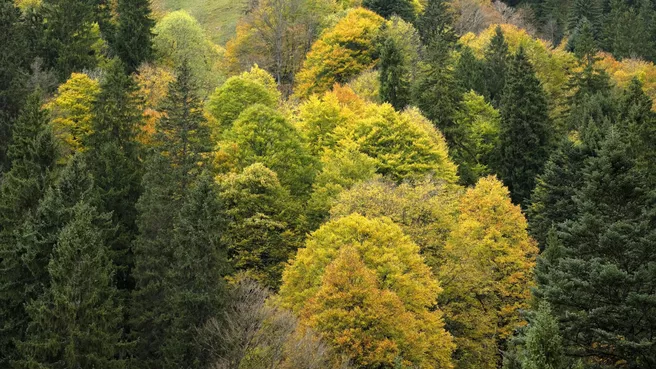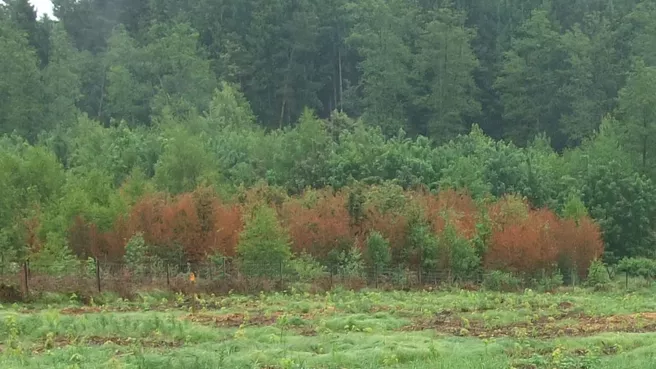Prof. Hans Pretzsch, head of the Chair of Forest Growth and Yield Science at theTUM School of Life Sciences Weihenstephan, was involved in the study and explains: "Due to the increasing warming, it gets warm early in spring and the trees get their leaves. However, this increases the risk of the trees suffering severe damage from late frost in spring, as young leaves are more susceptible to frost".
The study analysed hourly temperatures around the world over a period of 60 years and examined almost 1,500 plant species for their sensitivity to frost. The pairing of annual frost events and plant characteristics on a global scale now enables researchers to predict the susceptibility of forests to late frost events.
Late spring frosts damage European and Asian forests
"The study has now shown that the occurrence of such late spring frosts is increasing," confirms Pretzsch. The increase in risk is most dramatic in areas where late spring frosts were rare: coastal and eastern parts of Europe and East Asia. In these areas, many local trees are "opportunistic" and bloom out after short warming periods. For this reason, researchers expect that 35% and 26% of European and Asian forests in temperate latitudes will become increasingly vulnerable to spring frosts in the future.
This development is likely to continue, as the researchers have observed another adverse effect on the climate: "Unfortunately, late frost again favours the advance of climate change, as the leaf damage means that the plant can carry out less photosynthesis, can absorb less carbon and thus contributes to an increase in carbon in the atmosphere," says Pretzsch.
Global warming also burdens national economies
Global warming not only affects forests and ecosystems, but also burdens national economies. A single late frost in the spring of 2017 alone caused economic losses of 3.3 billion euros in Europe, of which only 18% were insured according to Munich Re's figures, is reported in the study.
The study also notes that many trees in areas historically prone to the risk of spring frost, such as North America, have invested in certain protective measures. Cold spells are more frequent in North America than in Asia or Europe, since the lack of east-west mountain ranges in North America allows for heat waves from the Gulf of Mexico as well as cold spells from the Arctic regions, which leads to high short-term temperature fluctuations. These "cautious" trees will not sprout until they have experienced sufficient heat. Caution is a valuable insurance policy against frost damage, which can impair their growth, reproduction and survival.
More Information
Publication: Late spring-frost risk between 1959 and 2017 decreased in North America, but increased in Europe and Asia, Zohner et al., PNAS, May 2020.
First Author: Constantin Zohner (Crowther Lab | ETH Zürich | Universitätstrasse 16 | 8006 Zürich | Switzerland)
Editing:
Susanne Neumann
TUM School of Life Sciences
Press and Public Relations
Scientific Contact:
Prof. Dr. Hans Pretzsch
TUM School of Life Sciences
Chair of Forest Growth and Yield Science
hans.pretzsch@tum.de
Tel. +49 8161 71 4711



